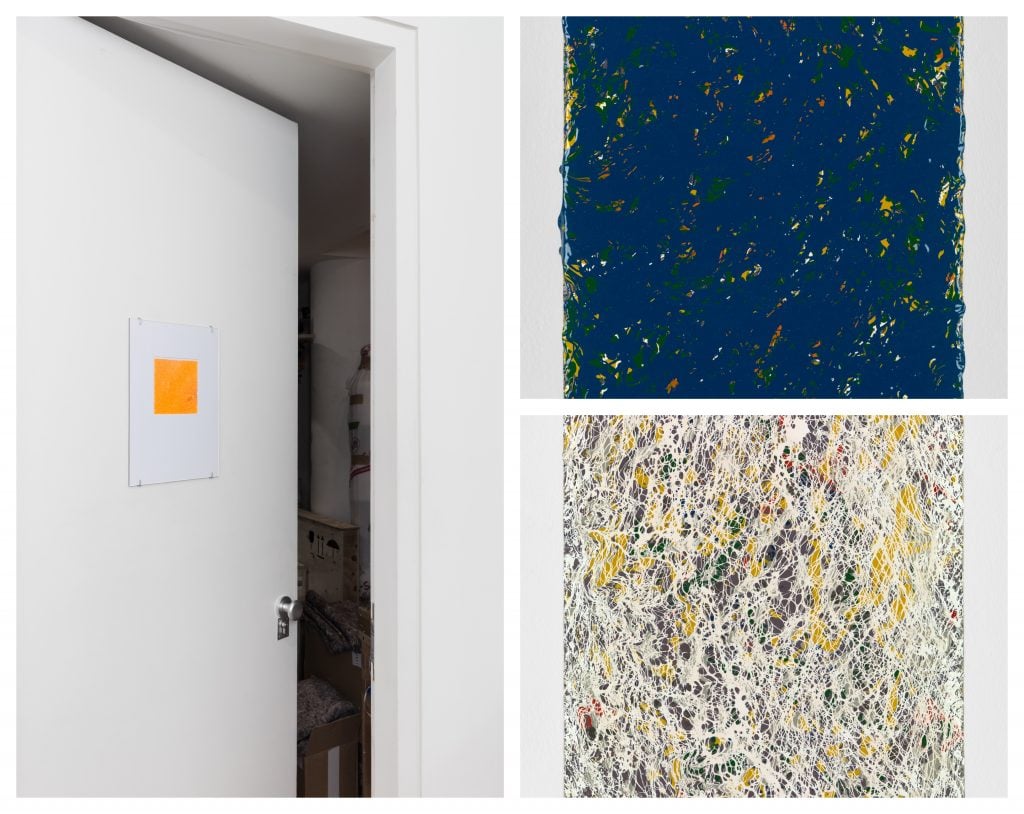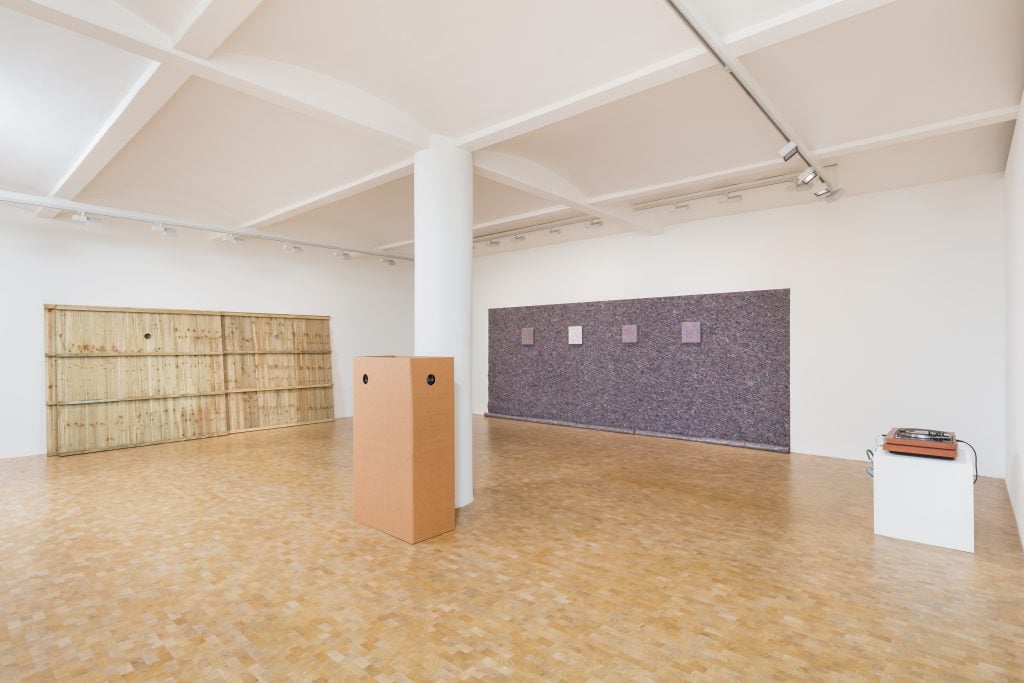Art & Exhibitions
An Artist Invents a ‘Rediscovered’ Woman Painter. Is It a Bold Critique of the Art World or Just Another Gimmick?
Gabriel Sierra’s fictional creation, Lucy Otter, raises provocative questions about privilege, gender, and the art world’s fixation on identity.

Despite the appearance of progress, the art world’s inclination to frame women artists as “rediscovered” falls into a well-worn trope that continues to center masculinist ideals. There’s definitely an increasing appetite for women’s artwork—especially on the secondary market, where the value of work by women is rising considerably faster than that of work by men. However, while the “forgotten” artist narrative seems to signify a victory for women, it doesn’t challenge the structures that marginalized them in the first place. Instead, these artists find themselves shoehorned into exhibitions and retrospectives; in place to preserve the myth of meritocracy.
In 1988, the feminist art collective The Guerrilla Girls created their sardonic list, The Advantages of Being a Woman Artist. Perks included: “Knowing your career might pick up after you’re 80,” and, “being included in revised editions of art history.” This much is true for Monica Sjöö, a pioneering artist whose first-ever retrospective at Stockholm’s Moderna Museet came some 18 years after her death. Also a writer and zealous activist, Sjöö’s exclusion from art institutions was telling of the academy’s male-dominated agenda at the time. There was little space for women artists, let alone women whose paintings of giant, elephantine phalluses and gods giving birth were deemed too blasphemous for public display. Artists like Sjöö—and others like Leonora Carrington and Pauline Boty, also recently “rediscovered”—are still constrained by this narrative, their work seemingly celebrated but largely reduced to their gender.

Installation view, “Lucy Otter, Studio Jumps,” Pippy Houldsworth Gallery, 2024. Courtesy of Gabriel Sierra and Pippy Houldsworth Gallery, London. ©Gabriel Sierra 2024. Photo: Mark Blower.
This brings us to Lucy Otter. Pippy Houldsworth is showing a series of paintings by the abstract artist so unknown because she—quite literally—doesn’t exist. A character from the as of yet unpublished novel by Colombian artist Gabriel Sierra, Otter’s biography is impressive. Alaskan-born but now Cornwall-based, the character is a former landscape gardener and was once a guest professor at the École nationale supérieure des Beaux-Arts in Paris. The paintings on show at Pippy Houldsworth’s “Studio Jumps,” supposedly made between 1978 and 1979, were created for her “childhood friend” Paul Hickey’s band, Duchamp Widows. The band is also a fictional construct, although their EP—and merch—are very much available for purchase at the gallery.
There are a few ways to look at Sierra’s project here. One interpretation might see the ruse as a bit of fun and ingenuity. Sierra, after all, is far from the only artist to use an alter-ego—Marcel Duchamp himself adopted the alias of Rrose Sélavy when toying with femininity in Man Ray’s photographs. Colombian creatives, too, have a long history of playing with identity to challenge social constraints, from the sculptures of Doris Salcedo and performance pieces by María José Arjona to the personas adopted by musicians like J Balvin. Yet the decision to make Otter a woman seems less like a playful experiment with alter ego, and more like a pointed critique of how the art world fixates on identity over substance.
Sierra’s work as a conceptual artist, with its focus on site-specific interventions and institutional critique, is far removed from Otter’s gestural abstraction and material focus. For his piece, Untitled (The Day as a Hole in the Middle of the Night), created for the 2011 Lyon Biennial, he cut out a large section of the gallery’s wooden floor, suspending it from the ceiling to expose the structure beneath and challenge the viewer’s sense of space. By contrast, Otter’s work emphasizes gestural abstraction with heavy impasto, where materiality becomes the primary focus.

Installation view, “Lucy Otter, Studio Jumps,” Pippy Houldsworth Gallery, 2024. Courtesy of Gabriel Sierra and Pippy Houldsworth Gallery, London. ©Gabriel Sierra 2024. Photo: Mark Blower.
This all left me with several questions. Are artist’s biographies really so integral to the way we interpret their work that Sierra felt compelled to create Otter to be able to experiment with a new mode of creation? Or was the artist really moved to create Otter as a comment on the trend of “rediscovering” women artists? The answer might lie in unpacking why Sierra chose to present this work under a female alias, particularly one whose work supposedly dates back to the 1970s.
On the one hand, Sierra’s project could be read as a commentary on how the art world disproportionately values the identities and credentials of artists, especially women, over the actual content of their work. On the other hand, the presence of merchandise and the promise of a future novel give the project a somewhat gimmicky feel, as if it’s less about critiquing this idea and more about capitalizing on it.
Here, the line between critique and mimicry becomes blurred. Indeed, much of the “rediscovering” of female artists done by writers, galleries, and institutions today seems entirely predicated on gender, overlooking the economic and sociopolitical conditions that shaped their lives and their ability to make art at the time. Similarly, Otter’s career—an entirely fabricated one—is unburdened by the struggles that real women artists of her supposed era faced. Yet it takes a certain kind of privilege to adopt a female persona, complete with scholarly credentials and historical context, and capitalize on it without having to bear any of the weight that comes with that identity. In doing so, Sierra risks not only trivializing the challenges faced by these women but also distracting from the real, deserving artists of that period, whom the zeitgeist is shining a light on—for now. Only time will tell whether Sierra’s project deepens this critique or merely adds to the noise.





